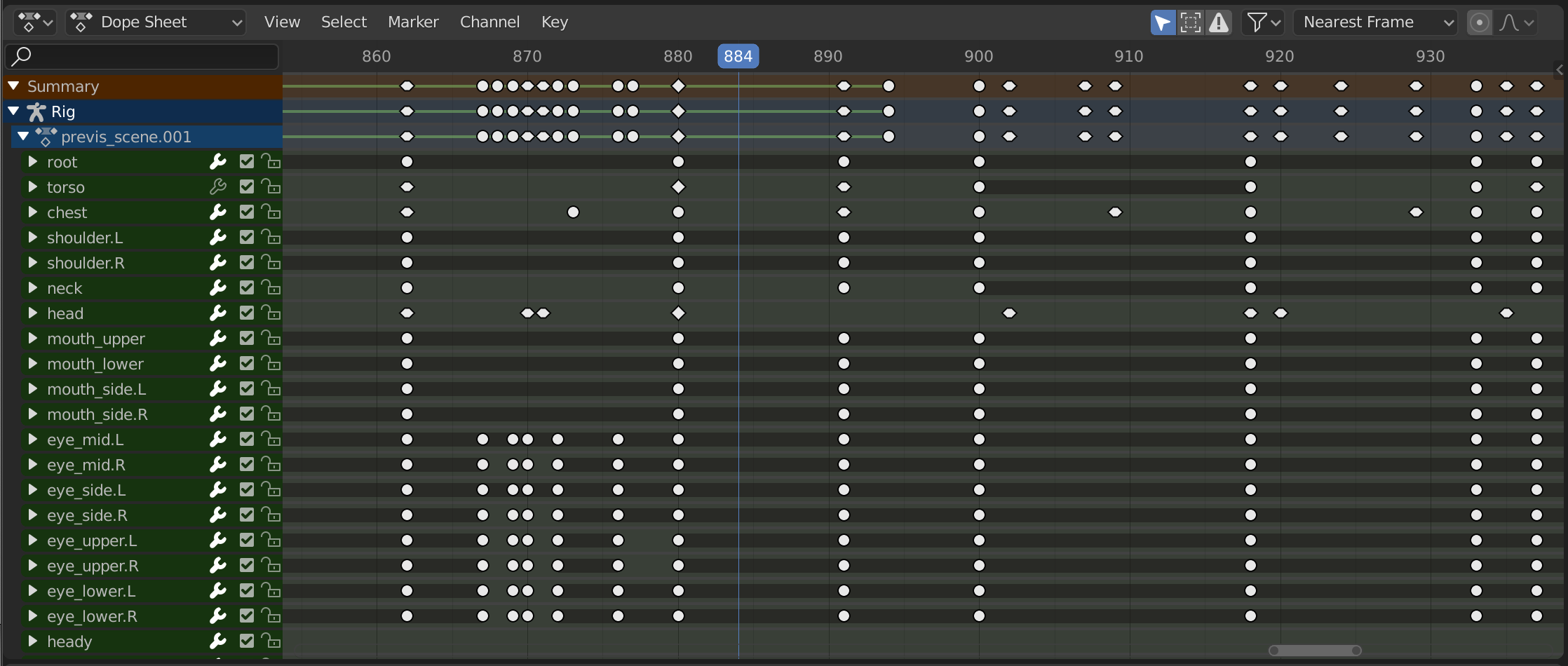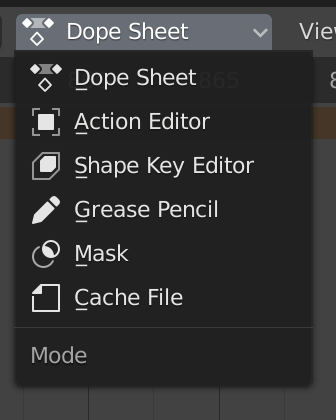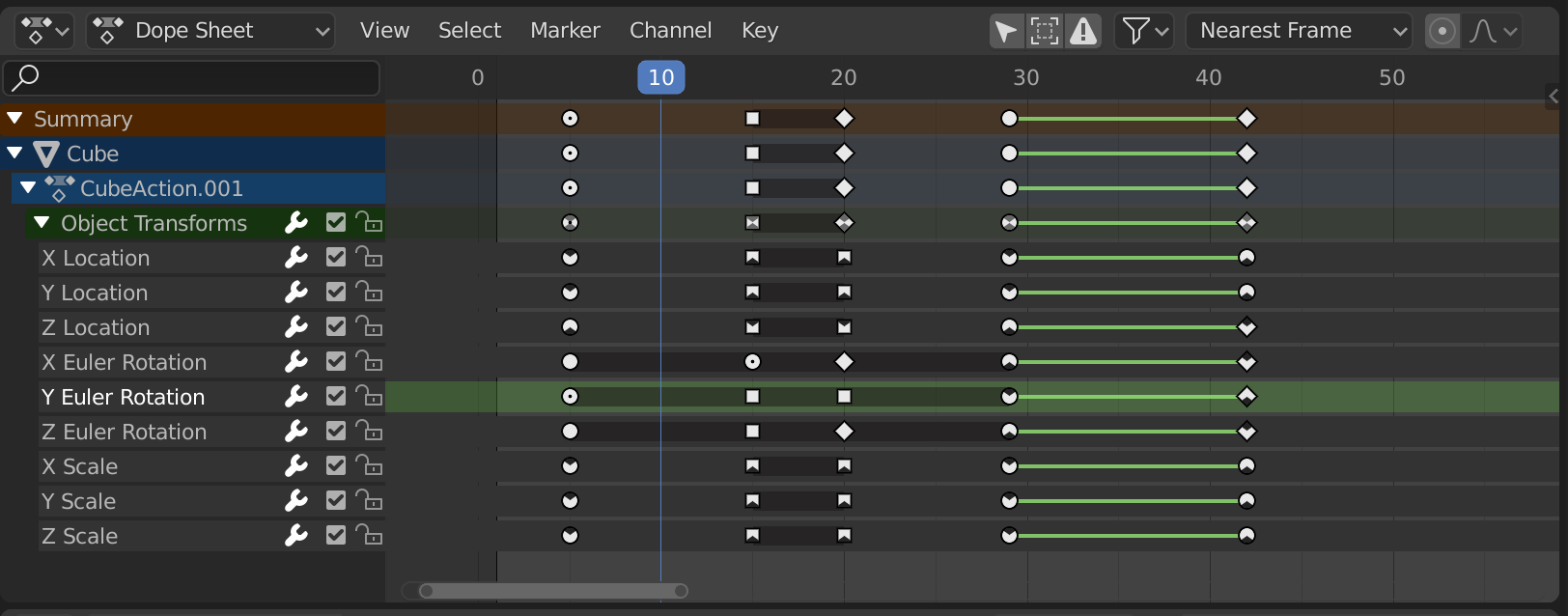Introduction#
The Dope Sheet offers a bird’s-eye view of the keyframes inside the scene. It’s inspired by classical hand-drawn animation, where animators make use of a chart showing exactly when each drawing, sound, and camera move will occur, and for how long.

The Dope Sheet.#
Dope Sheet Modes#
The editor has several different modes that can be selected from a dropdown in the header. The default Dope Sheet mode gives an overview of most types of animatable data. For others, such as masks, you need to switch to a more specific mode.

Dope Sheet modes.#
The modes are as follows:
Dope Sheet
Cache File: originally meant to show the baked animation data in Alembic files, but never implemented.
Main Region#
The Dope Sheet Editor shows a stack of channels (animatable properties), and for each channel, a series of keyframes laid out along the time axis.

The Dope Sheet Editor with object channels.#
Keyframes can take on various colors and shapes:
Gray |
Unselected |
Yellow |
Selected |
Other colors |
Custom keyframe tag set by the user () |
Diamond |
Free Keyframe Handle () |
Round |
Auto-Clamped Keyframe Handle |
Circle |
Automatic Keyframe Handle |
Square |
Vector Keyframe Handle |
Rhombus |
Aligned Keyframe Handle |
Gray bar between keys |
Held key (the two keyframes are identical) |
Green line between keys |
The curve segment uses custom interpolation () |
Upwards arrow |
Local maximum in curve (visible if is enabled) |
Downwards arrow |
Local minimum in curve |
Keyframes can be selected by clicking and moved by dragging. See the Select and Key menus for more options.